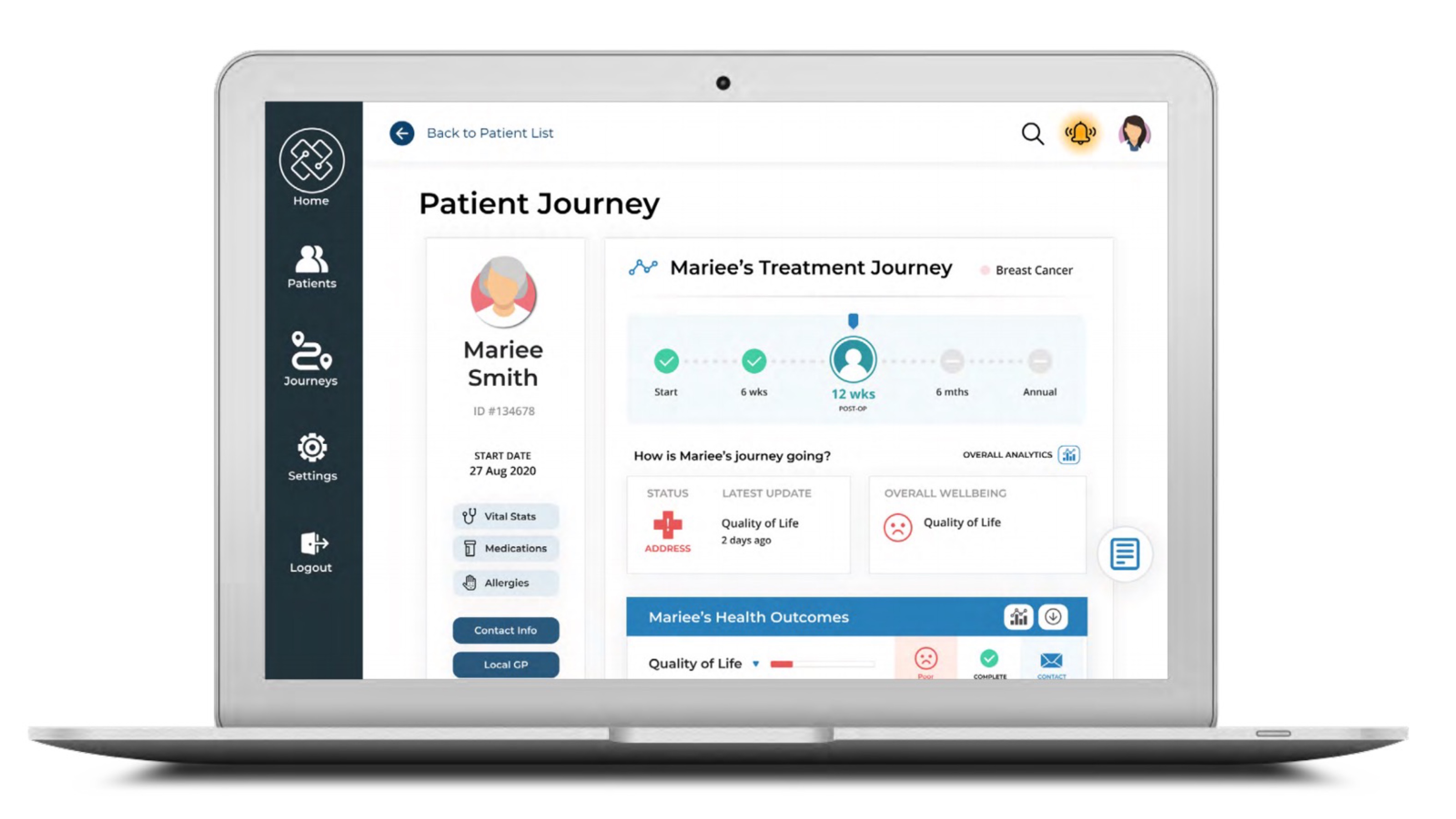Collaboration between The Clinician and the School of Design Innovation improves user experience using human-centred design
A collaboration between The Clinician, a New Zealand based digital health company, and our Master of User Experience Design (MUXD) students has given them the opportunity to tackle real-world design challenges.

The Clinician is a New Zealand-based digital health company that has built the ZEDOC digital health platform, which gives healthcare organisations the ability to collect health information from patients directly, by having them answer questions on their own mobile devices, from their own homes. Typically, these questions relate to an individual’s quality of life, symptom severity, functional ability, or emotional wellbeing and are referred to as ‘patient-reported outcomes’. By feeding this information back to healthcare organisations in real-time, providers and care teams gain a 360° view of each individual patient, helping them understand the effects of treatment and deliver better, more personalised care.
MUXD students were given challenges that focused on two key areas:
- How to engage patients in the process of reporting their outcomes, both at the start of their journey and then continually to keep response rates high.
- How to give healthcare providers using ZEDOC a seamless user experience.
“The idea was to give the students experience designing for real-world challenges in the digital health sector,” explains Jack Leggat, Marketing and Business Development manager at The Clinician. “While at the same time delivering The Clinician a diverse range of solutions and high-quality insights that could be incorporated within ZEDOC to improve the user experience for patients and providers.”
The challenges gave students the chance to use diverse user experience (UX) approaches and methodologies that they’d studied in class.
Student Jwen Yap and her team followed the double diamond design process, a design model which has four stages: discovery, definition, development and delivery. Together, these stages create a map designers can use to organise their thoughts in order to improve the creative process. ”The more you test, the more you learn about human behaviour that you never otherwise expect”
This process steered them to design physical, digital, and in-person materials that ensured the most holistic onboarding experience for the patient.
Student Lucy England and her team took an approach based on behavioural change theories and primary research, gaining understanding of patients’ motivations and engagement in self-reporting their health outcomes over time through the ZEDOC platform. Given the typically low response rates and poor patient engagement seen with digital health solutions, this research informed their designs for creating a more engaging experience for patients.
“Embedding human-centred design approaches into the medical field required learning a lot about the patient experience and the sensitivities around health and wellbeing. Extra care needs to be taken to design solutions that ensure patients are treated as people not data. This felt like a lot of responsibility, but at the same time a great learning experience.
“We implemented these aspects into our designs by addressing and greeting the patient on the landing page, giving them the option to personalise reminder settings, and visually displaying their contribution to the community,” says Lucy.
Jack noted how impressed The Clinician was with the work delivered by the students. The most valuable of which was the data-driven insights they produced. “Having those UX insights and high quality prototypes will be a huge help in our product development moving forward. Perhaps more rewarding was seeing how enthusiastic the students were during the collaboration—we loved working with the groups and hope they learned some valuable lessons along the way.”

